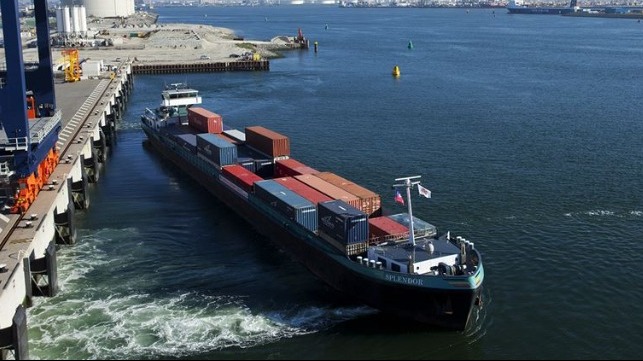Wartsila to Develop Autonomous Zero Emission Inland Shipping Barge

As part of an EU-funded project focusing on improving the sustainability and logistics for port operations, Wartsila, as the largest industrial partner in the project, is focusing on the issues of improving the logistics of ports to reduce bottlenecks that contribute to increased emissions in the ports. Wartsila is focusing on uniting several technologies to develop an autonomous, zero-emission barge for inland shipping that will be demonstrated at the Port of Rotterdam.
The research project, nicknamed MAGPIE (sMArt Green Ports as Integrated Efficient multimodal hubs) is being headed by the Port of Rotterdam Authority in partnership with other European ports, 10 research institutions, and over 30 companies in the Netherlands, Germany, France, Portugal, and Denmark. The program focuses on sustainable and smart port logistics seeking to improve the flow of goods while also achieving the goal of carbon-free operations by 2050. Included in the scope of the research is a series of digitalization and automation projects aimed at encouraging businesses to improve the sustainability of their logistics.
As part of the overall initiative, Wartsila’s sub-project is to demonstrate a commercially viable autonomous intra-port inter-terminal container shuttle to address an emerging capacity bottleneck for internal container transportation.
“We believe that overland transport modes will not be able to absorb the emerging capacity bottleneck for internal container movement,” says Hendrik Busshoff, Business Development Engineer, Wartsila Voyage. “So, we will be delivering an autonomous e-barge concept that can greatly enhance efficiency in the Port of Rotterdam through automated seaborne cargo transshipment. Our ambition is to see these container shuttles introduced into a smart logistics network within the next few years.”
Among the technologies that will be incorporated into the barge design is a sensor tech paired with the navigation systems for safe, automated ship movement. Wartsila’s SmartMove technology has been designed to handle high traffic volume safely both for complex inland waterways and busy ports. The technology has already been tested in several settings including in Singapore.
To achieve the goals for the project, Wartsila says the barge needs to not only be smart but also emission-free. They will draw on their experience from a separate project that developed a new battery system that has already been tested for inland operations from Rotterdam. The new barge will use electric propulsion that will be enabled employing an electric drive train and an interchangeable battery container solution, which is charged using renewable power.

that matters most
Get the latest maritime news delivered to your inbox daily.
“At Wärtsilä, we maintain that an autonomy strategy is key to a zero-emission ambition,” says Teus Van Beek, General Manager, Ecosystem Innovation, Wärtsilä Marine Systems. “To complement the e-navigation setup, we are part of a consortium that has developed a concept based on the use of replaceable battery containers, known as ZESPacks (Zero Emission Services). A network of open access charging points will be set up for exchanging battery containers for fully charged replacements, thereby keeping waiting time to a minimum. The first of these battery containers will be installed in the summer.”
The European Commission is providing nearly $30 million in research grants for the projects. The research is scheduled to run for five years looking at a broad range of initiatives within the green port project.
